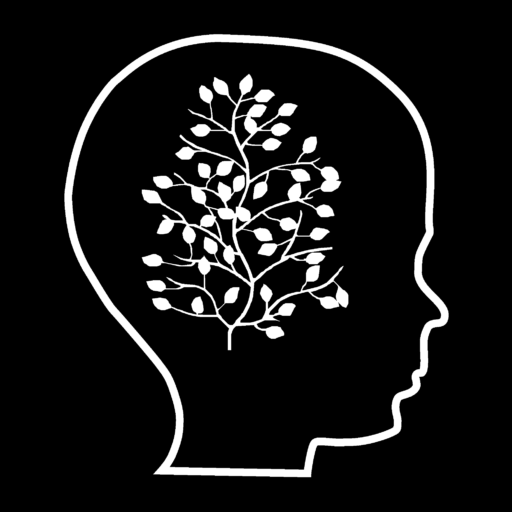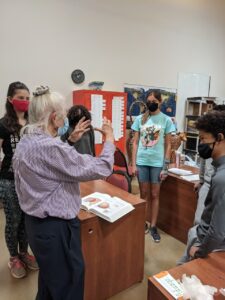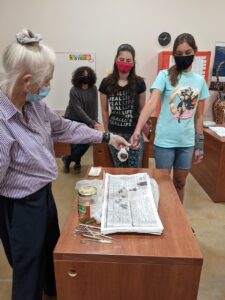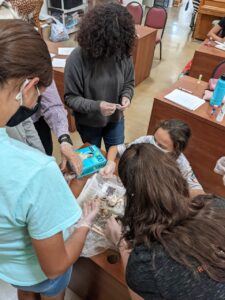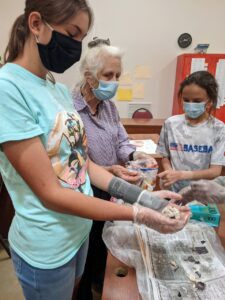Literally. We do lots of experiments in grades 6-8 science. Girls love explosions as much as boys, it seems. Here are two experiments with flashes.
As an 8-year-old boy, Lou Ellen and Vince’s son, David, now an LCA Board member, bought a huge electrical capacitor with money he’s saved. He left it in our care. Now that’s an opportunity to release some energy! Vince involved the students in designing an experiment to charge the capacitor to 30 VDC and discharge it through a short length of 30-gauge copper wire. We calculated the energy needed to melt that mass of wire, and we calculated the wire gauge of low-resistance connectors that ensured that the energy got deposited mostly in the thin wire. We used our school’s venerable 1000 frames-per-second camera to capture the event.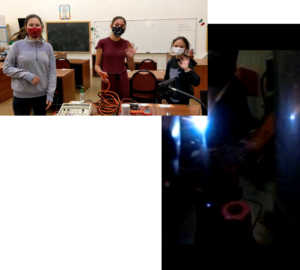
Vince brought the students into balancing chemical reactions and then into the interesting energetic reactions of alkali metals with water. He obtained 20 grams of pure sodium metal. We cut, cleaned, and weighed small samples, on the order of tens of mg. We put them into a beaker with water at a set temperature and timed how long they took to fizz their way away, becoming lye (NaOH) and hydrogen gas. We examined the hypothesis that there was a simple relation between duration and mass. The next step was to see how much faster the reaction was with warm water. Well, at 50 degrees Celsius, it was explosive. Students in a nearby classroom jumped up to see the repetition! We then did the experiment outdoors for all to see:
We do some science without physical flashes, rather, with flashes of insight. Two students in science 6-8 found a preserved cow’s eye in our science storeroom. They asked our Head of School and teacher of science 1-2 and 3-5, Dr. Lou Ellen Kay, if they could dissect it. She agreed to lead the dissection, provided that the students learn a great deal about the eye’s structure and function (much the same in the cow as in us humans).
On May 11, 2021, Lou Ellen convened the group. She gave a fascinating introductory review of the eye’s structure and function, based on her academic career, drawing also on an anatomy book’s illustrations. She dissected apart the fat and connective tissue, while pointing out the optic nerve and the positioning muscles. Students were able to heft the and feel its substantive firmness (though a plastic film barrier). She dissected out the cornea (looks like big contact lens), releasing the aqueous humour behind, and showing the iris and the vitreous humour. Cutting fully around, she showed the lens, vitreous body, retina, optic nerve, and the outermost stiffening, the sclera. Students put on gloves and handled the various parts. Lou Ellen gave a recap of what we all learned.
